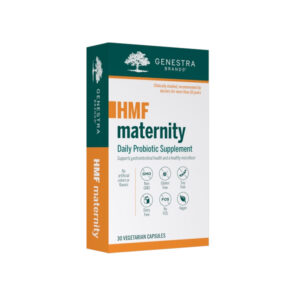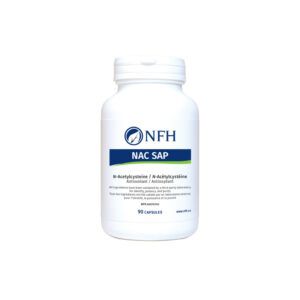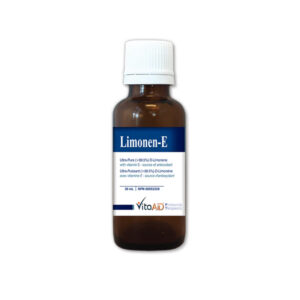Description
Benefits:
- For chronic pain relief
- Offers a natural source of PEA from non-GMO safflower oil
- Micronized for improved bioavailability
- Provides 400 mg PEA in each capsule, allowing for easy and clinically relevant dosing
- Suitable for vegetarians and vegans
Ingredients:
| Each Capsule Contains: | |
| Palmitoylethanolamide (PEA) | 400 mg |
| PEA (palmitoylethanolamide) is a fatty-acid-like compound which is extracted from non-GMO safflower oil. Micronized for improved solubility and absorption. | |
Non-Medicinal Ingredients: Vegetarian capsule (carbohydrate gum [cellulose], purified water), microcrystalline cellulose, vegetable grade magnesium stearate (lubricant), silica, stearic acid.
Dosage: Recommended Adult Dose: 1 capsule 1–3 times per day or as directed by a health care practitioner.
Warnings: Consult a health care practitioner if symptoms persist or worsen. Consult a health care practitioner prior to use if you are pregnant or breastfeeding. Keep out of reach of children.
Allergens: Contains no artificial colours, preservatives, or sweeteners; no dairy, starch, sugar, wheat, gluten, yeast, soy, corn, egg, fish, shellfish, animal products, salt, tree nuts, or GMOs. Suitable for vegetarians/vegans. Sealed for your protection. Do not use if seal is broken. For freshness, store in a cool, dry place.
Format: 90 Capsules
Contraindications: No known contraindications exist, though safety during pregnancy and lactation has not been established.13
Drug Interactions: Currently there are no known drug interactions; PEA has been used in clinical trials as a stand-alone analgesic, as well as in conjunction with citalopram, pregabalin, gabapentin, amitriptyline, oxycodone, and duloxetine.
Feature Summary: Palmitoylethanolamide (PEA) is an endogenously produced lipid that mediates the resolution of neuroinflammation and clinically reduces pain from a variety of sources.1,2,3 PEA is a type of fatty acid ethanolamine produced in microglia and mast cells, where it downregulates the activation of both cell types; levels of PEA are increased in brain areas involved in nociception, and appear to modulate protective responses to both inflammation and pain.4 Its effects are mediated via direct activation of PPAR-a and GPR55 receptors, and potentially by indirect activation of CB1 and CB2 receptors and the TRPV1 channel (i.e., the capsaicin receptor).5,6
In clinical trials, PEA has been shown to reduce pain levels from a variety of chronic conditions (of at least 6 months duration) where pain was not controlled by standard therapies, demonstrating effectiveness both alone and when combined with standard treatments.7 PEA has been shown to be efficacious for pain resulting from nerve compression syndromes, including sciatica and carpal tunnel syndrome.8 Randomized trials have also shown benefit for pain control for specific conditions, including TMJ,9 as well as for depressive symptoms in major depressive disorder when used in conjunction with antidepressants.10 In addition, PEA has been shown to improve endothelial function and reduce intraocular pressure among patients with ocular hypertension.11,12
Related Documents
- Rheumatoid Arthritis Protocol: Restoring Joint Function
- Spinal Pain Protocol: Reducing Chronic Degenerative Lumbar Disc Pain
- PEA Palmitoylethanolamide Monograph
References:
- Skaper, S.D., Facci, L., Barbierato, M., et al. (2015). N-Palmitoylethanolamine and neuroinflammation: a novel therapeutic strategy of resolution. Molecular Neurobiology, 52(2),1034–1042. PMID: 26055231
- Artukoglu, B.B., Beyer, C., Zuloff-Shani, A., et al. (2017). Efficacy of palmitoylethanolamide for pain: a meta-analysis. Pain Physician, 20(5), 353–362. PMID: 28727699
- Paladini, A., Fusco, M., Cenacchi, T., et al. (2016). Palmitoylethanolamide, a special food for medical purposes, in the treatment of chronic pain: a pooled data meta-analysis. Pain Physician, 19(2), 11–24. PMID: 26815246
- Skaper, S.D., Facci, L., et al. (2012). Mast cell-glia axis in neuroinflammation and therapeutic potential of the anandamide congener palmitoylethanolamide. Philosophical Transactions of the Royal Society of London Series B, Biological Sciences, 367(1607), 3312–3325. PMID: 23108549
- Rinne, P., Guillamat-Prats, R., Rami, M., et al. (2018). Palmitoylethanolamide promotes a proresolving macrophage phenotype and attenuates atherosclerotic plaque formation. Arteriosclerosis, Thrombosis, and Vascular Biology, 38(11), 2562–2575. PMID: 30354245
- Petrosino, S.& Di Marzo, V. (2017). The pharmacology of palmitoylethanolamide and first data on the therapeutic efficacy of some of its new formulations. British Journal of Pharmacology, 174(11), 1349–1365. PMID: 27539936
- Gatti, A., Lazzari, M., et al. (2012). Palmitoylethanolamide in the treatment of chronic pain caused by different etiopathogenesis. Pain Medicine, 13(9), 1121–1130. PMID: 22845893
- Keppel Hesselink, J.M. & Kopsky, D.J. (2015). Palmitoylethanolamide, a neutraceutical, in nerve compression syndromes: efficacy and safety in sciatic pain and carpal tunnel syndrome. Journal of Pain Research, 8, 729–734. PMID: 26604814
- Marini, I., Bartolucci, M.L., et al. (2012). Palmitoylethanolamide versus a nonsteroidal anti-inflammatory drug in the treatment of temporomandibular joint inflammatory pain. Journal of Orofacial Pain, 26(2), 99–104. PMID: 22558609
- Ghazizadeh-Hashemi, M., Ghajar, A., et al. (2018). Palmitoylethanolamide as adjunctive therapy in major depressive disorder: A double-blind, randomized and placebo-controlled trial. Journal of Affective Disorders, 232, 127–133. PMID: 29486338
- Strobbe, E., Cellini, M., & Campos, E.C. (2013). Effectiveness of palmitoylethanolamide on endothelial dysfunction in ocular hypertensive patients: a randomized, placebo-controlled cross-over study. Investigative Ophthalmology & Vision Science, 54(2), 968–973. PMID: 23307959
- Gagliano, C., Ortisi, E., Pulvirenti, L., et al. (2011). Ocular hypotensive effect of oral palmitoyl-ethanolamide: a clinical trial. Investigative Ophthalmology & Vision Science, 52(9), 6096–6100. PMID: 21705689
- Nestmann, E.R. (2016). Safety of micronized palmitoylethanolamide (microPEA): lack of toxicity and genotoxic potential. Food Science Nutrition, 5(2), 292–309. PMID: 28265364







Reviews
There are no reviews yet.